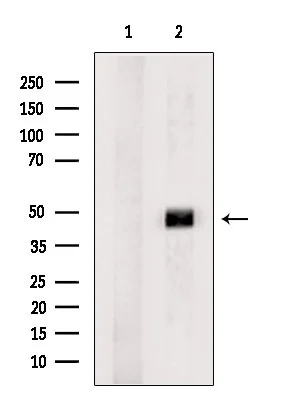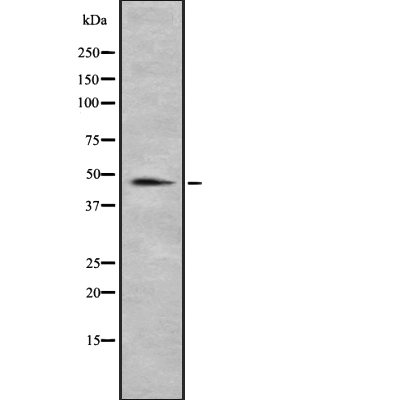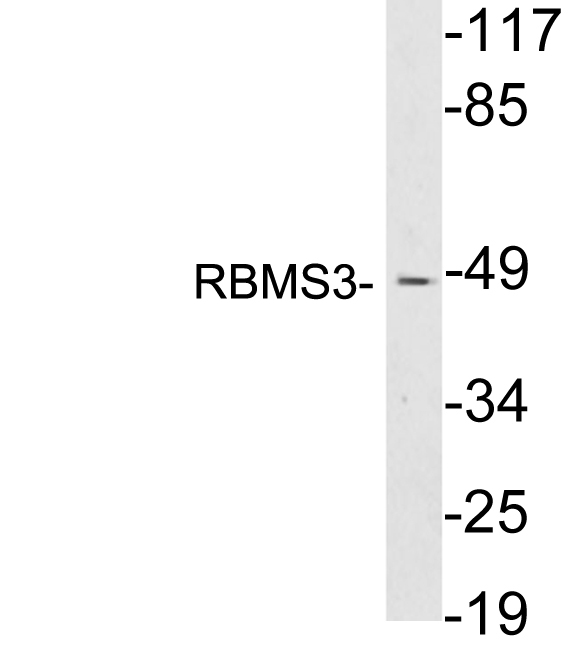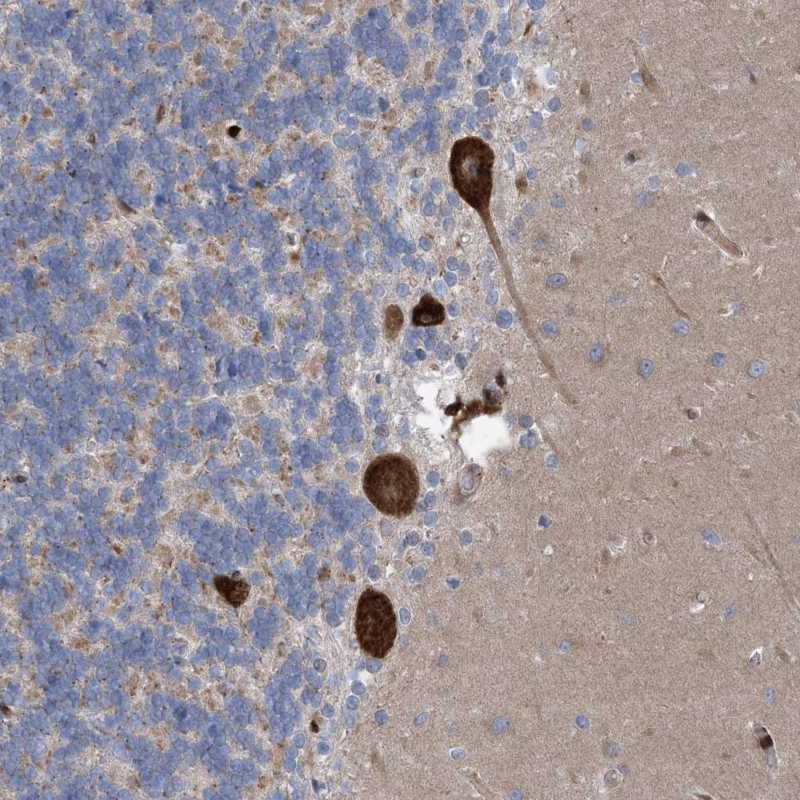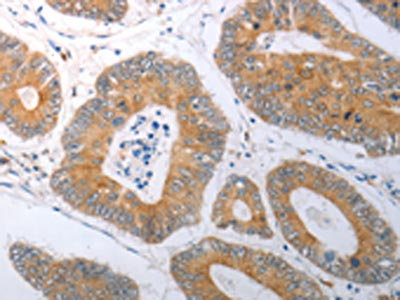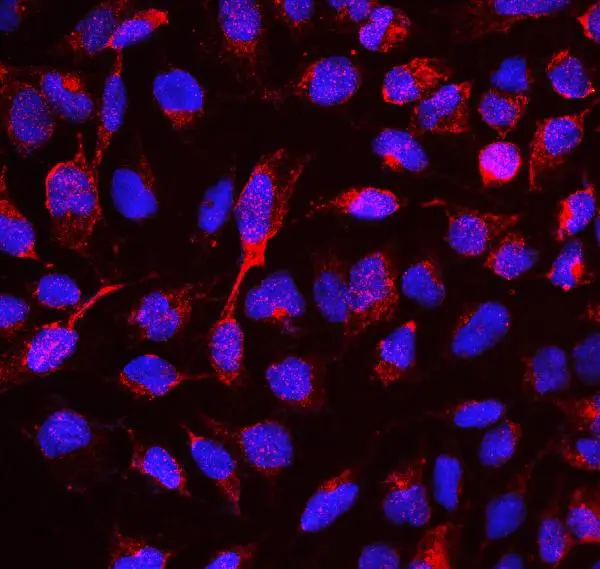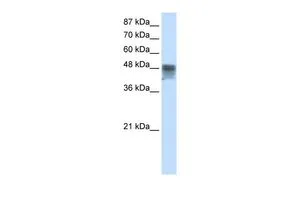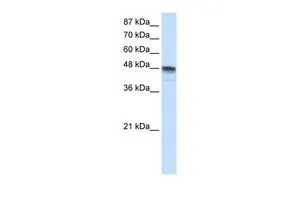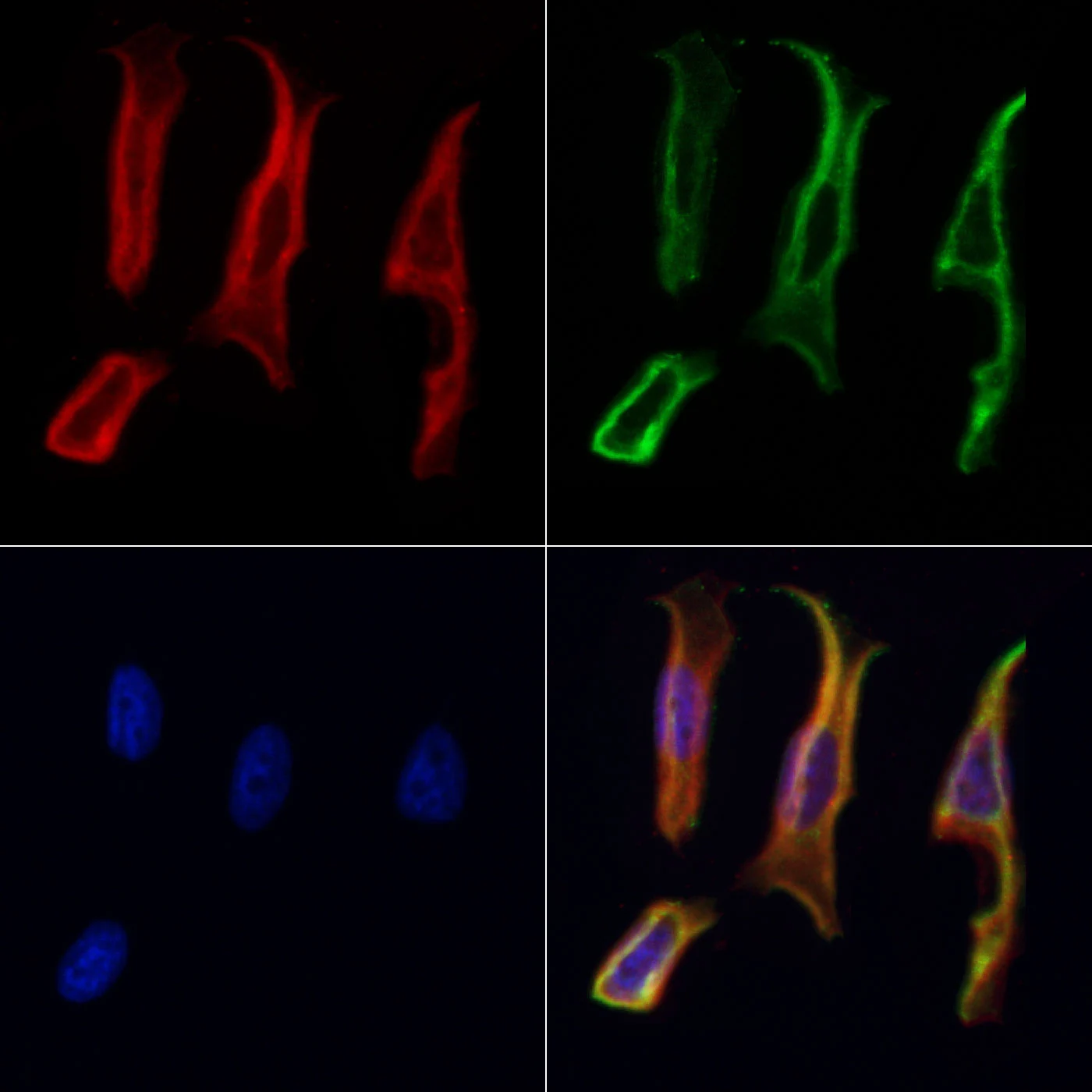
ICC/IF analysis of PFA-fixed HeLa cells using GTX00791 RBMS3 antibody. Red : Primary antibody Green : Tubulin Permeabilization : 0.1% Triton X-100 Dilution : 1:200
RBMS3 antibody
GTX00791
ApplicationsImmunoFluorescence, Western Blot, ImmunoCytoChemistry
Product group Antibodies
ReactivityHuman, Mouse
TargetRBMS3
Overview
- SupplierGeneTex
- Product NameRBMS3 antibody
- Delivery Days Customer9
- Application Supplier NoteWB: 1:1000-1:3000. ICC/IF: 1:100-1:500. *Optimal dilutions/concentrations should be determined by the researcher.Not tested in other applications.
- ApplicationsImmunoFluorescence, Western Blot, ImmunoCytoChemistry
- CertificationResearch Use Only
- ClonalityPolyclonal
- Concentration1 mg/ml
- ConjugateUnconjugated
- Gene ID27303
- Target nameRBMS3
- Target descriptionRNA binding motif single stranded interacting protein 3
- Target synonymsRNA-binding motif, single-stranded-interacting protein 3, RNA binding motif, single stranded interacting protein, RNA-binding protein
- HostRabbit
- IsotypeIgG
- Protein IDQ6XE24
- Protein NameRNA-binding motif, single-stranded-interacting protein 3
- Scientific DescriptionThis gene encodes an RNA-binding protein that belongs to the c-myc gene single-strand binding protein family. These proteins are characterized by the presence of two sets of ribonucleoprotein consensus sequence (RNP-CS) that contain conserved motifs, RNP1 and RNP2, originally described in RNA binding proteins, and required for DNA binding. These proteins have been implicated in such diverse functions as DNA replication, gene transcription, cell cycle progression and apoptosis. The encoded protein was isolated by virtue of its binding to an upstream element of the alpha2(I) collagen promoter. The observation that this protein localizes mostly in the cytoplasm suggests that it may be involved in a cytoplasmic function such as controlling RNA metabolism, rather than transcription. Multiple alternatively spliced transcript variants encoding different isoforms have been found for this gene. [provided by RefSeq, Apr 2010]
- ReactivityHuman, Mouse
- Storage Instruction-20°C or -80°C,2°C to 8°C
- UNSPSC12352203

